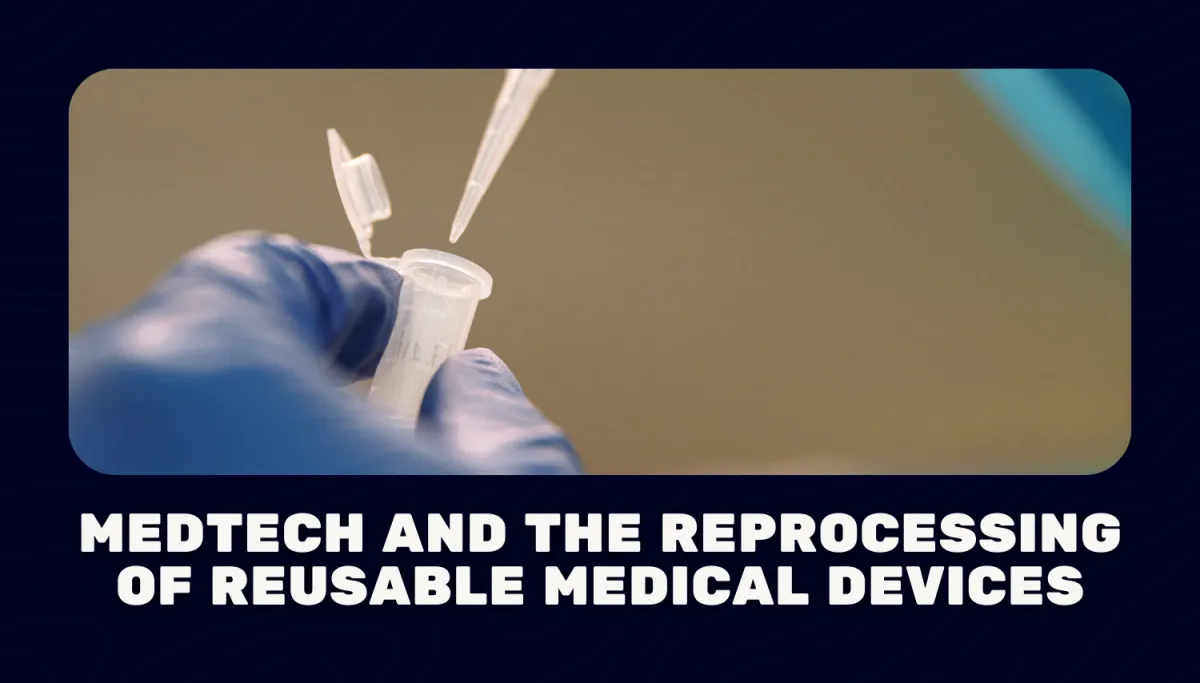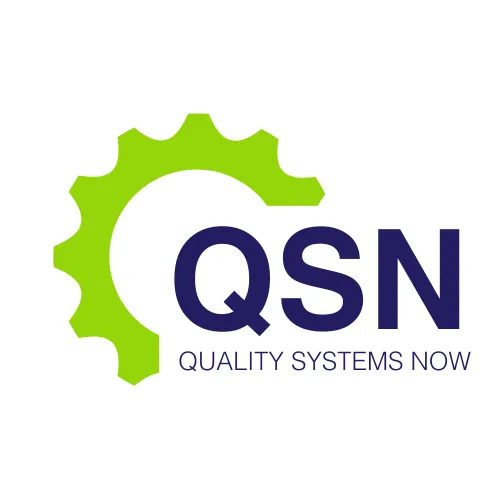LATEST NEWS

Medtech and the Reprocessing of Reusable Medical Devices
The reprocessing of reusable medical devices plays a vital role in ensuring patient safety and the effective functioning of healthcare systems. In Australia, the practice of reprocessing medical devices has been formalized through standards such as AS 4187 and AS 5369, which provide guidelines for the cleaning, disinfection, and sterilization of medical equipment. These standards are particularly critical in Medtech (medical technology), a sector that relies heavily on the safe reuse of advanced medical devices to support complex healthcare interventions. At Quality Systems Now we help our clients to get into the specifics of AS 4187 and AS 5369, discussing their impact on the reprocessing of reusable medical devices within the Australian Medtech landscape.
1. The Medtech Sector and Reusable Medical Devices
Medtech encompasses a wide range of products, from simple instruments like scalpels to complex devices like endoscopes and surgical robots. Many of these devices are reusable, meaning they can be cleaned, disinfected, and sterilized for use across multiple patients. The reuse of medical devices presents economic and environmental benefits by reducing waste and costs, but it also carries risks if the devices are not properly reprocessed.
Reusable medical devices, particularly those that come into contact with sterile tissues or mucous membranes, must undergo stringent cleaning and sterilization procedures to ensure they are free from contaminants, microorganisms, and residual organic material. Infections caused by improperly reprocessed medical devices can lead to severe health complications, including healthcare-associated infections (HAIs). Therefore, proper adherence to national and international standards is critical for preventing patient harm.
2. Overview of AS 4187 and AS 5369
AS 4187 and AS 5369 are Australian standards that govern the reprocessing of reusable medical devices, ensuring that they meet the necessary safety and hygiene requirements.
a. AS 4187:2014 - Reprocessing of Reusable Medical Devices in Health Service Organizations
AS 4187:2014 is the primary standard governing the reprocessing of reusable medical devices in Australian healthcare settings. It outlines the procedures for cleaning, disinfecting, and sterilizing reusable medical devices to prevent the transmission of infectious agents. The standard applies to various healthcare settings, including hospitals, day surgery facilities, and dental practices, and covers the reprocessing of both critical and semi-critical medical devices.
The key components of AS 4187:2014 include:
Cleaning and disinfection protocols: The standard emphasizes the importance of thorough cleaning as the first step in the reprocessing cycle. Cleaning involves removing organic material and debris that could interfere with disinfection and sterilization processes. Disinfection is required for devices that do not need full sterilization but must be free of most pathogenic microorganisms.
Sterilization requirements: Devices that enter sterile body cavities or come into contact with sterile tissues require sterilization. AS 4187 outlines various methods of sterilization, including steam sterilization (autoclaving), low-temperature sterilization, and chemical sterilization.
Validation and monitoring: The standard requires health service organizations to validate their reprocessing procedures to ensure they are effective. This includes regular monitoring and testing of sterilization equipment, as well as documenting reprocessing activities.
Personnel training: Ensuring that personnel involved in reprocessing are adequately trained is crucial to maintaining compliance with AS 4187. The standard stresses the importance of ongoing education and competency assessments for reprocessing staff.
AS 4187 has undergone several revisions to align with international best practices, and it reflects Australia's commitment to reducing healthcare-associated infections through rigorous reprocessing protocols.
b. AS 5369:2018 - Cleaning, Disinfecting, and Sterilizing Reusable Medical Instruments and Equipment
AS 5369:2018 complements AS 4187 by providing more specific guidelines for cleaning, disinfecting, and sterilizing reusable medical instruments and equipment. This standard focuses on ensuring the correct techniques are used for various categories of devices based on their level of risk and intended use.
Key aspects of AS 5369:2018 include:
Categorization of medical devices: The standard classifies medical devices into three categories—critical, semi-critical, and non-critical—based on their level of contact with patients. Critical devices, such as surgical instruments, require the highest level of sterilization, while non-critical devices, such as blood pressure cuffs, may only require surface disinfection.
Cleaning methods: AS 5369 outlines specific cleaning methods for different types of reusable devices. This includes the use of enzymatic detergents, ultrasonic cleaners, and mechanical washers. The cleaning process is critical to removing biofilms and other contaminants that could compromise sterilization.
Sterilization cycles: The standard provides detailed instructions for selecting the appropriate sterilization cycles based on the material of the device and the method of sterilization. For instance, steam sterilization is suitable for heat-tolerant devices, while low-temperature sterilization is used for heat-sensitive instruments.
Storage and transport: The standard also addresses the importance of proper storage and transport of reprocessed devices. Once reprocessed, devices must be stored in a manner that preserves their sterility until they are used again. This includes using sterile packaging and maintaining a controlled environment to prevent contamination.
3. Importance of Compliance with AS 4187 and AS 5369
Compliance with AS 4187 and AS 5369 is not only a regulatory requirement in Australia but also a critical element of patient safety and quality care. Failure to comply with these standards can lead to a range of consequences, including regulatory penalties, reputational damage, and increased risk of healthcare-associated infections.
a. Risk of Infections
One of the most serious consequences of improper reprocessing of reusable medical devices is the transmission of infections. Healthcare-associated infections (HAIs) are a significant concern in Australian hospitals, and poorly reprocessed devices can act as vectors for harmful pathogens, including bacteria, viruses, and prions. Reprocessing failures have been linked to outbreaks of infections, such as Pseudomonas aeruginosa, which can thrive in poorly cleaned endoscopes and other complex medical devices.
b. Regulatory Oversight
In Australia, the Therapeutic Goods Administration (TGA) plays a key role in regulating the safety and quality of medical devices. Health service organizations must demonstrate compliance with AS 4187 and AS 5369 during regulatory audits and inspections. Non-compliance can result in sanctions, including fines, suspension of operations, and the recall of improperly reprocessed devices.
c. Medtech Innovation and Reprocessing
As the Medtech industry continues to innovate and develop more complex reusable medical devices, the reprocessing standards must evolve to address the unique challenges posed by these advancements. Devices such as robotic surgical instruments, advanced endoscopes, and implantable devices require highly specialized reprocessing procedures due to their intricate designs and sensitivity to heat and chemicals.
Compliance with AS 4187 and AS 5369 ensures that Medtech manufacturers and healthcare providers are aligned with best practices in reprocessing, safeguarding both patients and medical personnel from harm.
4. Challenges and Future Directions
While AS 4187 and AS 5369 provide a robust framework for reprocessing reusable medical devices, challenges remain. One significant challenge is the reprocessing of complex devices with narrow lumens, sharp angles, and delicate components. These devices require meticulous cleaning and sterilization procedures, and even slight deviations from protocol can result in contamination.
To address these challenges, ongoing research and development are needed to improve reprocessing technologies. This includes advancements in automated cleaning systems, real-time monitoring of sterilization cycles, and the development of reprocessing-friendly device designs.
Additionally, as Medtech continues to grow, there is a need for updated standards that keep pace with technological advancements. Collaboration between regulatory bodies, healthcare providers, and Medtech companies is essential to ensure that reprocessing standards remain relevant and effective in preventing infections.
Conclusion
AS 4187 and AS 5369 provide the foundation for safe and effective reprocessing of reusable medical devices in Australia. These standards are essential for maintaining patient safety, preventing healthcare-associated infections, and ensuring compliance with regulatory requirements. As Medtech continues to evolve, adherence to these standards will remain critical in ensuring that reusable medical devices are reprocessed to the highest possible standards, safeguarding the health and well-being of patients across the healthcare system.
